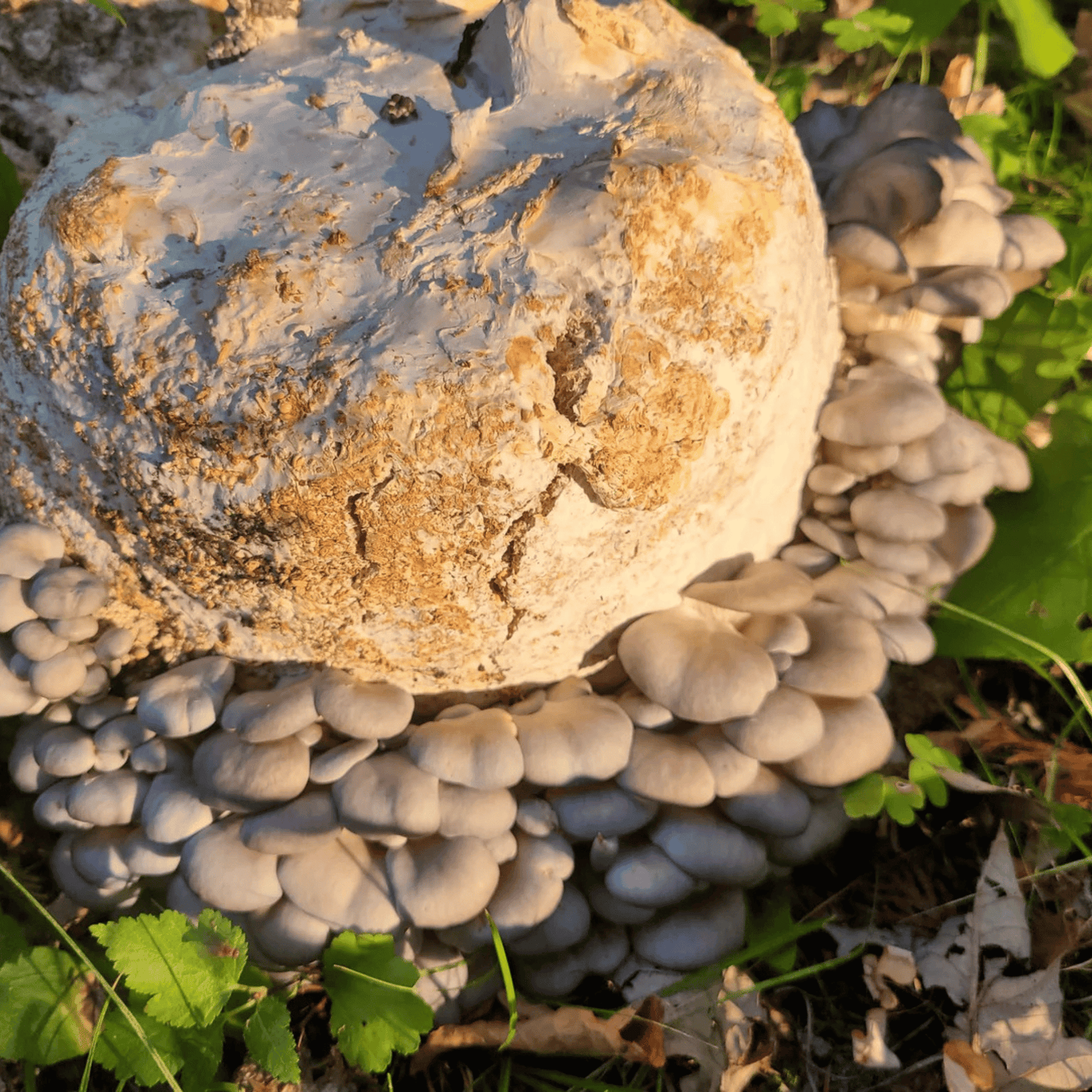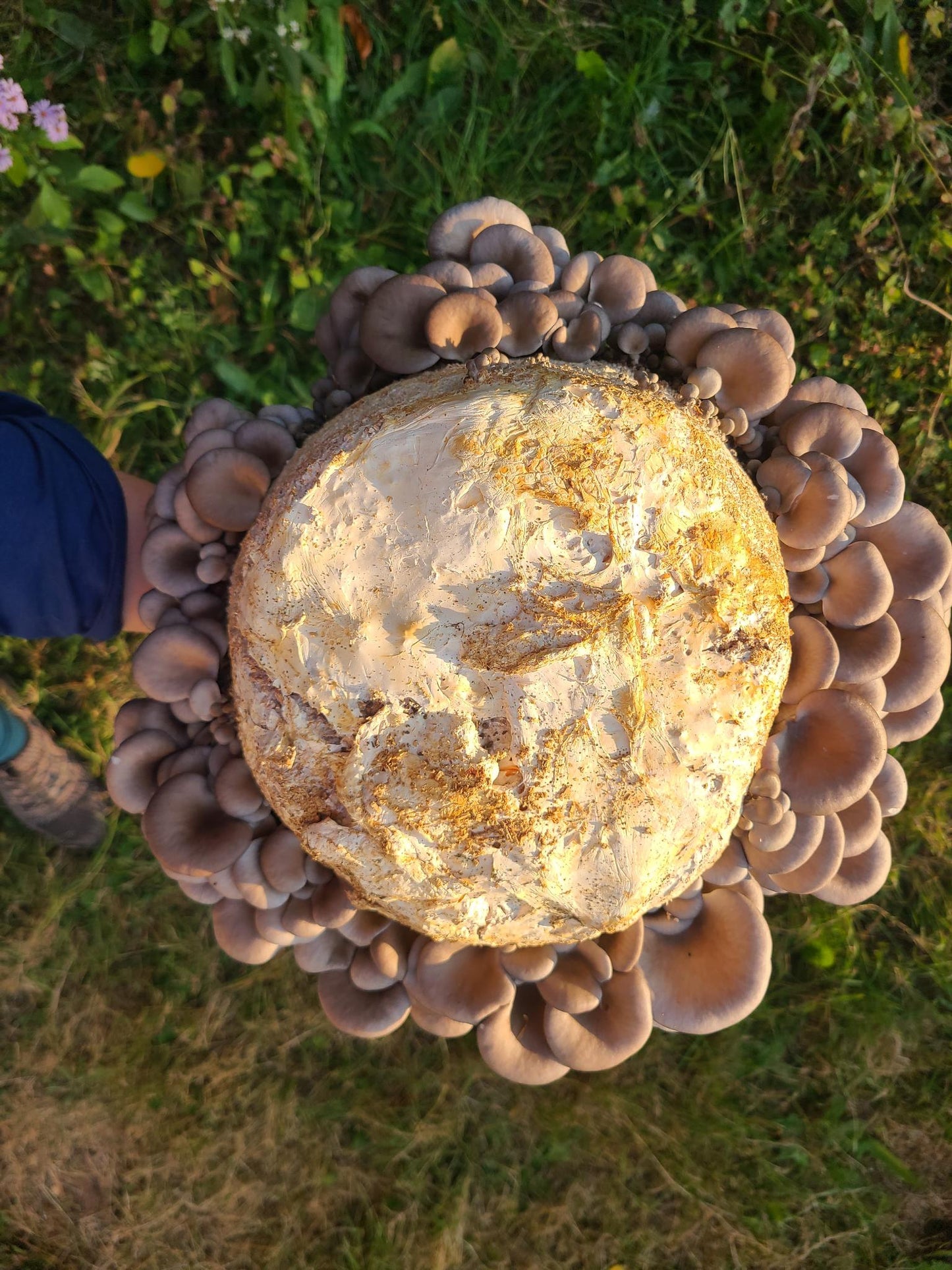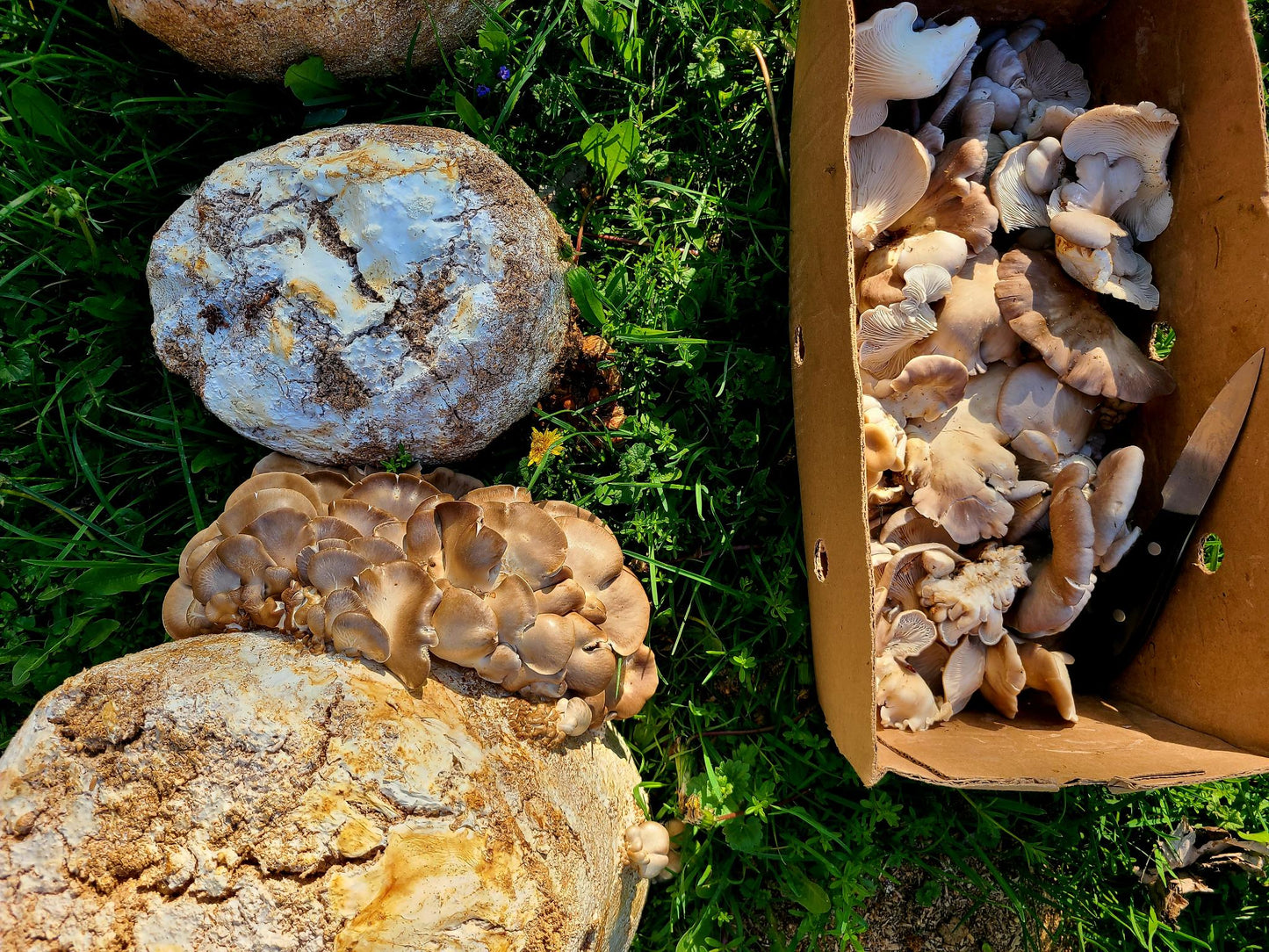
Decomposing Hydraulic Oil with Oyster Mushrooms | Part 1
Share
Written by Shane O'Donnell
November 24 2022
Nothing says "party" quite like a box of greasy shop rags.
A friend generously gifted me a large cardboard box filled with rags that he used to soak up the hydraulic oil from a tractor hose leak. Now, I know you're thinking "What a lucky guy!", and you're right.
I fed it to mushrooms, and I'm going to explain why and how I did it.
But first, some context.
Mycoremediation is the process of using mushrooms to remediate damaged and contaminated landscapes. Mushrooms can break down environmental and industrial chemicals and pathogens. There are a few notable species that are very good at this. For example, Oyster mushrooms are great at breaking down hydrocarbons (oil, gas, diesel), Wine Caps are good at digesting E. coli, and shiitake is known to be able to deal with textile dyes.
A few years ago, I had access to a barrel of mixed vehicle fluids that included diesel, waste vegetable oil and engine coolant. Rather than wait for the only hazardous waste day a year, I attempted to deal with the waste myself, relying on the help of mushrooms.
I gave 10 jars of Oyster mushroom mycelium in various concentrations of this fluid. Over the course of 3 months, each jar learned how to digest the black sludge. One by one, the contamination became light and eventually disappeared entirely. I didn't pursue the project further then, but I always wanted to try it again, and things I wanted to do better.
Enter November 2022 and I have just come into a small pile of contaminated cardboard and cotton rags. Let's go!
Bench Test
I started with two simple tests, one with the cardboard and the other with the blue cotton rag. I wanted to see if the mycelium would take to them differently. I put each into its own jar along with a few handfuls of healthy Blue Oyster spawn. Next, placed a filter disk on top of each jar opening. Then, I closed each jar with a plastic lid with a large hole drilled into it to allow for air exchange. I labelled each jar and put them into the incubation room.
Here is how they changed over the course of 10 days.
1) Hydraulic oil-soaked cardboard with strong P. ostreatus mycelium growth
2) Hydraulic oil-soaked cotton rag with almost no mycelium growth.
It's clear that the mycelium aggressively grew over the cardboard while was much more reticent with the cotton rags.
3) Bottom of cardboard jar. Note the yellow fluid on the top right.
The small blobs of yellow liquid on the top right of the jar are called exudates or metabolites. Mycelium digests its food outside of its body by pumping out this enzyme and chemical soup. Then it absorbs the decomposed slurry and uses it as food.
The fact that we can see metabolites being exuded tells us that it has figured out how to decompose at least some part of the hydraulic oil. Very exciting.
Even Better
In my opening paragraphs, I mentioned that there were things I wanted to do better. One of those things is testing. Just because the mycelium grew through the contaminated medium doesn't mean all the harmful components have been broken down into safer chemicals.
There is a simple way to test the toxicity and infer the efficacy of these tests. It's by performing a bioassay. Simply put, it means trying to germinate beans that have been exposed to various concentrations of the contaminant. I will explain how I set that up and the results in Part 2.
I want to understand why the rags are not being consumed by the mycelium. I have two ideas:
1) The rags have too much oil soaked into them. If a concentration of some contamination is too high, it will hinder or kill the organism you're trying to use to clean it up.
2) The mycelium doesn't like the rag. This seems unlikely since cotton is readily digestible by mycelium. I've grown mushrooms on retired jeans before with little effort.
To test the first hypothesis, I'm going to inoculate a clean shop rag and see if I can grow the same mycelium on it. If this works, I can say with a bit more confidence that the second hypothesis is correct.
The Journey Continues...
In Part 2, I will dive into the bioassay, introduce a new species to aid in our journey and begin the next phase of the experiment.
Get Involved, Support the Work
Mycology is a potent piece of the puzzle in turning toxic chemicals and pathogens into healthy soil. At this point in time, the mycelium is asking me to tinker and experiment. This brings be a lot of joy.
If you want to support community citizen science projects like this one, you can do that by purchasing from our store and telling your friends about fungi and Heartwood Mushrooms.
My want to get more people involved and excited about this. If you have an idea or interest in partnering on a pilot project, I would love to talk.








